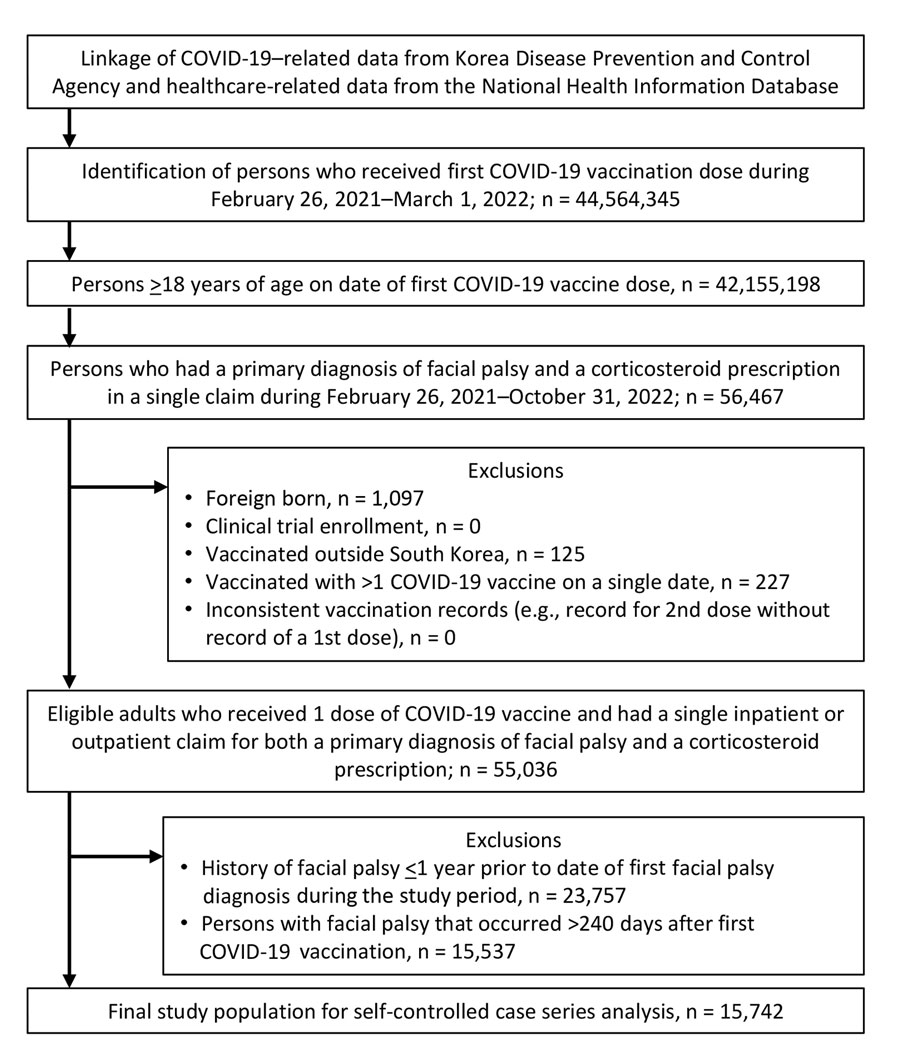Volume 30, Number 11—November 2024
Research
Risk for Facial Palsy after COVID-19 Vaccination, South Korea, 2021–2022
Figure 1

Figure 1. Flowchart of participant selection in study of risk for facial palsy after COVID-19 vaccination in South Korea, 2021–2022. The Korea Disease Control and Prevention Agency database has operated since 2020 and collects information on age, sex, type of vaccine and lot number, vaccinating healthcare provider, and date of vaccination for all COVID-19 vaccines. The National Health Information Database includes data collected by the National Health Insurance Service, which is the single-payer health insurance in South Korea, covering 97% of total population (≈50 million persons). The overall positive predictive value of the diagnoses recorded in the National Health Information Database is 82%.
1These first authors contributed equally to this article.
2These last authors contributed equally to this article.